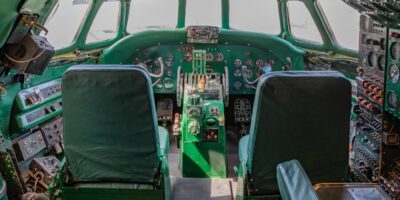Flight Simulator Training
Flight simulators play a crucial role in modern aviation training. They provide a safe environment for pilots to learn and practice without risking lives or expensive equipment. This method offers an array of benefits and has various applications across different sectors of aviation training, from civilian to military.

The Evolution of Flight Simulators
The concept of flight simulation dates back to the early 20th century. Initially, simple mechanical devices were used to mimic flight conditions. Edwin Link’s invention, the Link Trainer, in the 1920s was one of the first effective simulators. This pneumatic-driven device became instrumental during World War II, training thousands of pilots.
Over time, technology advanced. By the 1970s, computer-based simulators began replacing mechanical systems. Today, high-fidelity simulators equipped with advanced software and hardware provide a near-realistic flying experience.
Types of Flight Simulators
Flight simulators vary in complexity and purpose. Basic desktop simulators run on personal computers. They’re often used by enthusiasts and student pilots for basic training or practice.
Full Flight Simulators (FFS)
Full flight simulators offer the highest level of fidelity. They replicate the cockpit environment, including all systems, controls, and displays. Motion platforms provide realistic movements, while visual systems display high-resolution images of the outside world. These simulators are mainly used by airlines and training institutions for advanced pilot training and certification.
Flight Training Devices (FTD)
Flight training devices are less complex than full flight simulators but still provide essential training. They may not have motion capabilities but offer accurate cockpit replicas and systems for procedural training.
Part-Task Trainers (PTT)
Part-task trainers focus on specific aspects of flight training. They help pilots master particular tasks, such as instrument navigation or emergency procedures. These trainers are cost-effective and highly targeted, providing repetitive practice in critical areas.
Benefits of Flight Simulator Training
Flight simulators offer numerous benefits. They allow pilots to train in a controlled environment, where errors don’t have real-world consequences. Simulators enable practice of rare but crucial emergency situations, enhancing preparedness without risking safety.
Cost efficiency is another significant advantage. Operating a simulator is much cheaper than flying a real aircraft. There’s no need for fuel, maintenance, or air traffic control coordination, reducing expenses significantly.
Environmental impact is also minimized. Simulators reduce the carbon footprint associated with flight training, promoting greener practices in the aviation industry.
Applications in Pilot Training
Flight simulator training spans various stages of pilot education. For student pilots, simulators provide initial exposure to flight principles and basic maneuvering. They can practice takeoffs, landings, and simple navigation.
For advanced training, simulators help in mastering complex procedures, such as instrument flight rules (IFR) operations. Pilots can also practice handling different weather conditions, system failures, and emergency scenarios.
Recurrent Training
Airlines use simulators for recurrent training. Pilots must undergo periodic training to retain their licenses and certifications. Simulators provide a platform to refresh and evaluate skills, ensuring compliance with regulatory standards.
Military Applications
The military sector extensively uses flight simulators for training. Simulators provide realistic combat scenarios, enabling pilots to practice tactics and maneuvers without live firing. They also support team training, coordinating multi-aircraft missions, and integrating with ground forces.
Technological Innovations
Recent technological advancements have further enhanced flight simulators’ capabilities. Virtual reality (VR) and augmented reality (AR) are making their way into the industry. These technologies offer immersive experiences, enhancing spatial awareness and decision-making skills.
Artificial intelligence (AI) and machine learning (ML) are being integrated to create adaptive training environments. Simulators can now adjust difficulty levels in real-time, providing personalized training experiences. AI-driven analytics track performance, identifying strengths and areas for improvement.
Regulatory Standards
Flight simulators are subject to rigorous regulations and certification processes. Authorities like the Federal Aviation Administration (FAA) and the European Union Aviation Safety Agency (EASA) set strict standards to ensure simulator fidelity and effectiveness.
These standards cover various aspects, including motion, visual systems, control force requirements, and system functionality. Regular inspections and updates are mandatory to maintain certification and training validity.
Industry Challenges
Despite their benefits, flight simulators face challenges. High initial costs for purchasing and maintaining advanced simulators can be a barrier for smaller training institutions. Continuous technological advancements also require ongoing investments to stay current.
Ensuring the simulators’ fidelity to real-world conditions remains critical. Any discrepancies between simulator and actual aircraft behavior can impact training effectiveness. Regular updates and rigorous testing are essential to maintain high standards.
Future Prospects
The future of flight simulator training looks promising. Increasing integration of VR, AR, AI, and ML will continue to enhance realism and effectiveness. Hybrid training models, combining simulator and real flight experiences, might emerge as a new standard.
As the aviation industry grows, the demand for highly trained pilots will rise. Flight simulators will play an essential role in meeting this demand efficiently and safely. Their ability to offer comprehensive, cost-effective, and environmentally friendly training solutions ensures they remain a cornerstone of aviation education.




Subscribe for Updates
Get the latest articles delivered to your inbox.
We respect your privacy. Unsubscribe anytime.